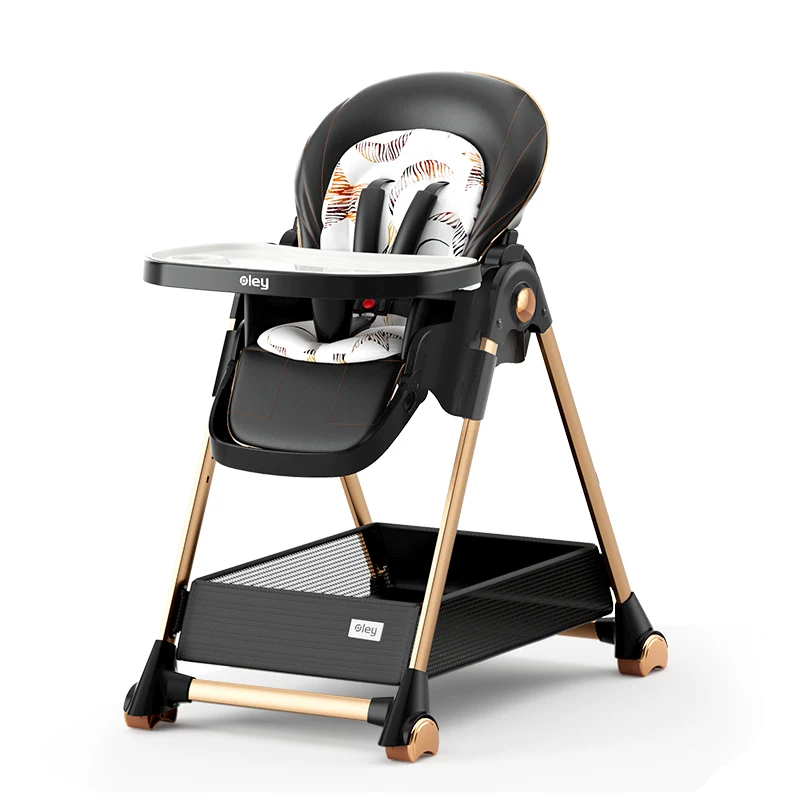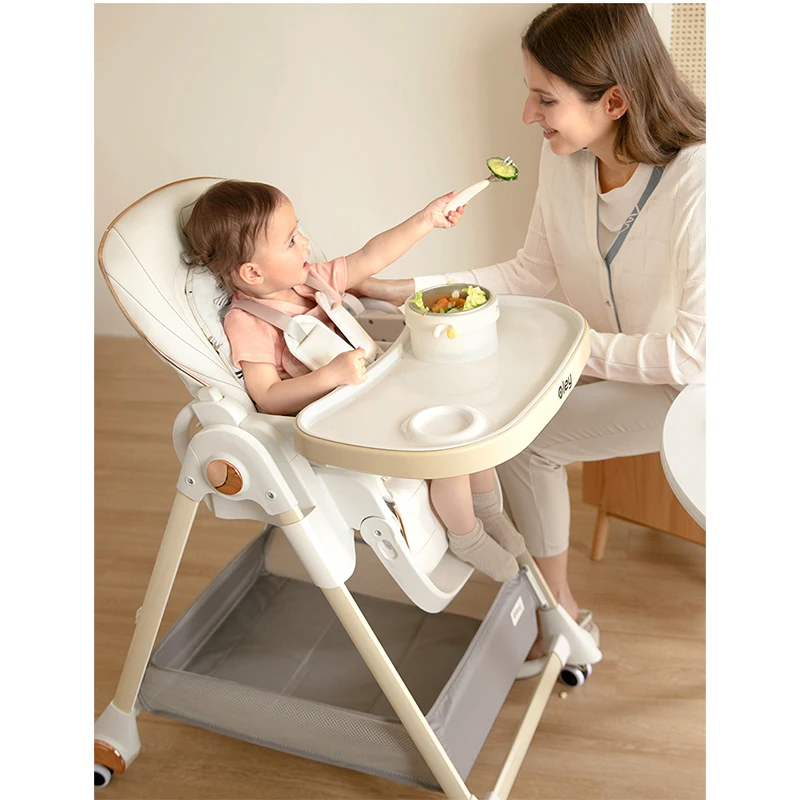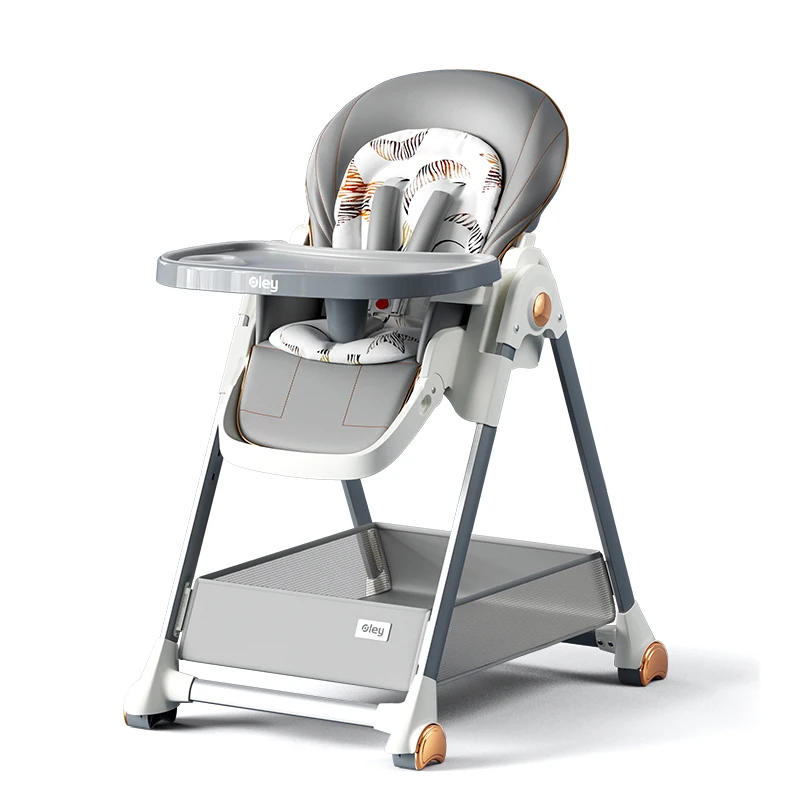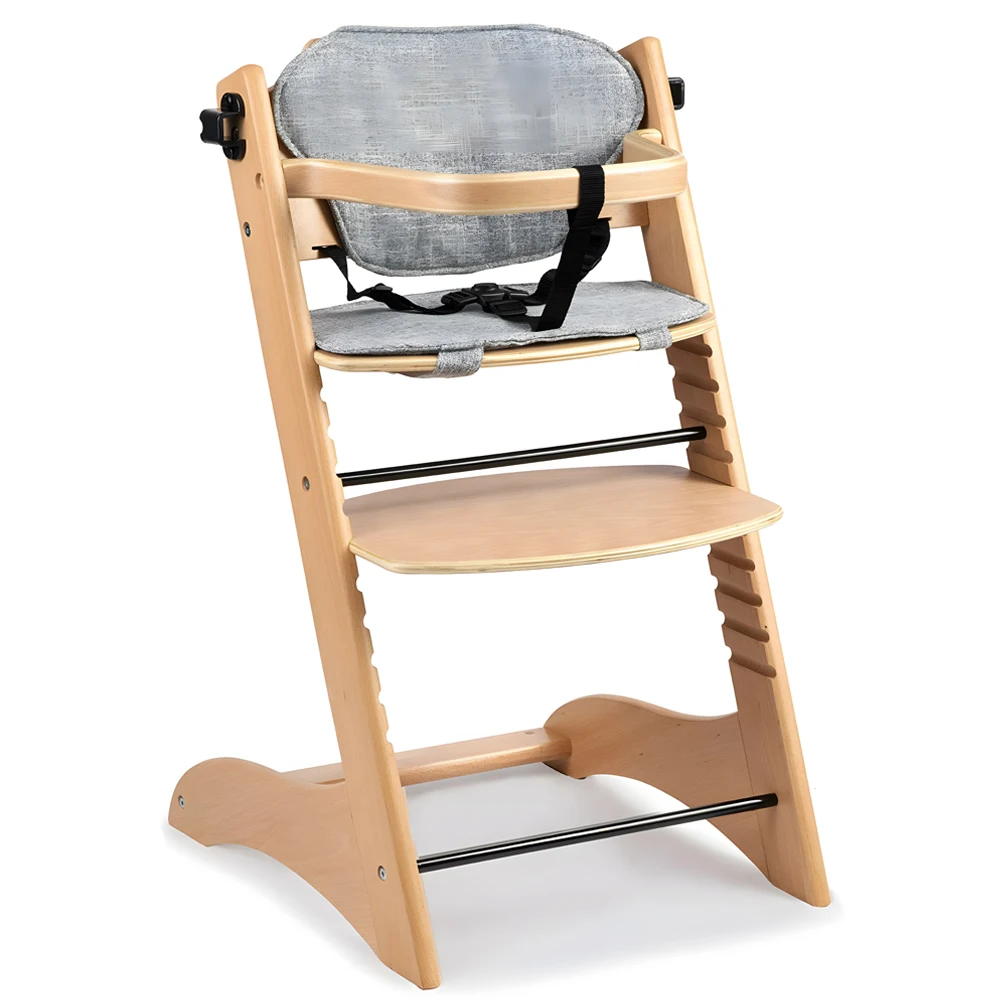Understanding the Need for a High Chair
The Role of High Chairs in Infant Development
A high chair is an essential piece of furniture designed to help infants transition from being fed in a reclined position to sitting up and eating at a table. It provides a safe and secure way for babies to join family meals, experience new textures and flavors, and develop essential motor skills. High chairs support the development of independent eating habits and help in socializing during meal times. As a parent, it’s crucial to understand the appropriate age and developmental stage for introducing a high chair to ensure your baby’s safety and comfort.
Benefits of Using a High Chair
Introducing a high chair at the right developmental stage offers several benefits. It promotes better posture and encourages your baby to sit up straight, which is important for their overall physical development. High chairs also facilitate hand-eye coordination as babies learn to grasp and manipulate utensils and food. Additionally, using a high chair can help establish a consistent eating routine, fostering healthy eating habits and social interaction with family members during meals.

Developmental Milestones for High Chair Readiness
Motor Skills and Core Strength
One of the primary factors in determining when your baby is ready for a high chair is their motor skills and core strength. By around six months of age, most babies have developed sufficient head and neck control to sit upright. This is crucial for safely sitting in a high chair, as they need to support their own body weight and maintain balance. Observe your baby’s ability to sit with minimal support and their progress in holding their head up steadily before introducing them to a high chair.
Sitting Unassisted
Another milestone to look for is your baby’s ability to sit unassisted. By the time your baby is around six to nine months old, they should be able to sit up without relying on support from pillows or your hands. This indicates that their muscles are strong enough to maintain an upright position. If your baby can sit independently for extended periods and is showing interest in their surroundings, it may be time to consider using a high chair.
Safety Considerations for High Chairs
Choosing the Right High Chair
Selecting a high chair that meets safety standards is essential for your baby’s well-being. Look for high chairs with a sturdy base and a safety harness that securely holds your baby in place. The high chair should have a five-point harness system to prevent your baby from sliding or climbing out. Ensure that the chair is made of durable materials and has a wide, stable base to prevent tipping over. Check for certifications from safety organizations to ensure the high chair complies with safety regulations.
Proper Use and Adjustments
Once you have chosen a high chair, it is important to use it correctly and make necessary adjustments. Adjust the seat height and tray position to ensure that your baby can comfortably reach their food and that their feet are supported. The high chair should be positioned close to the table to encourage proper eating posture. Regularly check the straps and harness to make sure they are secure and adjusted correctly. Avoid using the high chair as a playpen or for purposes other than feeding to maintain its primary function and ensure your baby’s safety.
Introducing the High Chair to Your Baby
Making the Transition Smooth
Transitioning your baby to a high chair should be a gradual process. Start by placing the high chair in a familiar environment, such as the dining area, to help your baby get used to it. Allow your baby to explore the high chair while it is not in use, so they become familiar with its appearance and features. You can also let your baby sit in the high chair during non-meal times to get them accustomed to the seating position. Gradually introduce them to the idea of sitting in the high chair during meal times, starting with short periods and increasing as they become more comfortable.
Encouraging Positive Associations
To create a positive association with the high chair, make mealtimes enjoyable and engaging. Offer a variety of colorful and textured foods to stimulate your baby’s interest and curiosity. Use cheerful and encouraging language to make the experience enjoyable. Be patient and understanding if your baby initially resists sitting in the high chair. With time and consistent positive reinforcement, they will likely adjust and start enjoying their high chair experiences.

Monitoring Your Baby’s Comfort and Safety
Observing for Signs of Discomfort
It is important to regularly monitor your baby’s comfort while using the high chair. Pay attention to any signs of discomfort, such as fussiness, restlessness, or difficulty sitting comfortably. Check that the seat padding is adequate and that the harness is properly adjusted to prevent any chafing or irritation. Ensure that the tray is at the right height and that your baby’s arms and legs have enough room to move comfortably. Making necessary adjustments to address any discomfort will help create a more enjoyable feeding experience for your baby.
Adapting the High Chair as Your Baby Grows
As your baby grows and develops, their needs and preferences may change. Be prepared to adapt the high chair as needed to accommodate these changes. Many high chairs have adjustable features, such as reclining seats and removable trays, to accommodate a growing baby. As your baby becomes more proficient in sitting and eating, you may need to adjust the high chair’s height and tray position to match their evolving needs. Regularly assess your baby’s comfort and make adjustments to ensure that the high chair continues to meet their developmental needs.
Common Challenges and Solutions
Dealing with Resistance
It is not uncommon for babies to initially resist sitting in a high chair. They may prefer to be held or may be uncomfortable with the new seating arrangement. To address this resistance, try to identify and address any underlying issues. Ensure that the high chair is set up correctly and that your baby is comfortable and secure. Gradually increase the time spent in the high chair during each feeding session to help them adjust. Offer plenty of encouragement and make mealtimes positive and enjoyable to help ease their transition.
Managing Feeding Challenges
Feeding challenges can also arise when introducing a high chair. Your baby may be hesitant to try new foods or may have difficulty coordinating their movements. Offer a variety of textures and flavors to encourage exploration and experimentation. Use appropriate utensils and feeding tools to help your baby develop their self-feeding skills. Be patient and supportive as your baby learns to navigate the high chair and develop their eating abilities.
The Role of High Chairs in Social Development
Encouraging Family Interaction
High chairs play a significant role in promoting family interaction and social development. By sitting at the table during meals, your baby has the opportunity to engage with family members and observe social eating behaviors. This interaction helps develop their social skills and fosters a sense of belonging. Encourage conversations and interaction during mealtimes to enhance your baby’s social development and create positive family experiences.
Building Healthy Eating Habits
Introducing a high chair at the appropriate developmental stage supports the establishment of healthy eating habits. By participating in family meals, your baby learns about portion sizes, mealtime routines, and the importance of a balanced diet. Model healthy eating behaviors and offer a variety of nutritious foods to promote good eating habits. Creating a positive mealtime environment encourages your baby to develop a healthy relationship with food and fosters lifelong healthy eating habits.

Conclusion: Embracing the High Chair Milestone
Introducing your baby to a high chair is an important developmental milestone that signifies their readiness to transition from being fed in a reclined position to sitting up and participating in family meals. By understanding the developmental milestones, choosing the right high chair, and making the transition smooth and enjoyable, you can support your baby’s growth and development effectively.
As you navigate this exciting phase, remember to monitor your baby’s comfort and safety, address any challenges. And embrace the positive impact that using a high chair has on your baby’s social and developmental progress. With patience, encouragement, and attention to your baby’s needs. The high chair can become a valuable tool in fostering their independence and enjoyment of mealtimes.
